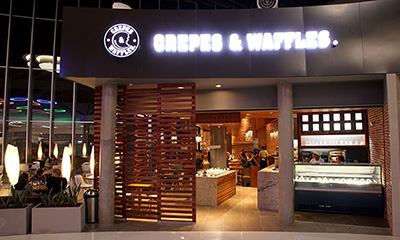More and more organisations are finding that two-way radios are unable to meet their demands. They are expensive, outdated and lacking in data capabilities and features. Coverage is limited according to radio compatibility and infrastructure.
As cellular networks grow ever stronger, new opportunities for push-to-talk over cellular (PTToC) technology are being created. The market is recognising that the limitations of radio technologies can be overcome by PTToC and companies are increasingly considering making the switch from legacy two-way radio systems to PTToC solutions.
Here are 10 good reasons to make the switch from traditional LMR and DMR systems to push-to-talk over cellular (also known as PTT and PoC) technology:
- Reliable, instant communication
Push-to-talk over cellular enables instant, reliable, and secure communication. It allows seamless communication with up to 5000 remote employees, no matter where they are in the world. Unlike legacy two-way radios, as well as enabling voice communication, PTToC technology also enables images, files, videos and messages to be shared at the touch of a button. Live video calls can also be made using PTT technology.
Thanks to the low latency of PTToC solutions, there is little to no difference between a traditional one-to-one PTT call and a call between 1000 people. PTToC technology can also seamlessly change between cellular and broadband technology, avoiding any interruption in communications.
- Enhanced coverage
Because PTToC technology uses cellular networks instead of radio waves, PoC users can communicate with each other across the world, regardless of geographic distance.
What’s more, strong growth in satellite communications and private networks is now bringing connectivity to the hardest-to-reach locations. This enables organisations to still have a reliable line of communication with their employees, even if there’s limited cellular coverage. They no longer need to rely on expensive legacy radio systems for their critical communications.
- Extensive feature set
Nowadays, consumers expect a range of features on a single device so they do not need to switch from one device to another, when their needs change.
PTToC applications include an extensive feature set, particularly compared to legacy radios. All fully integrated and all available on one device.
These features include real-time GPS location tracking, text messaging, multimedia sharing, live video communication, SOS emergency alerts and lone workers monitoring to help keep remote workforces safe, and workforce management.
- Cost savings
The expansion of mobile networks means that PTToC is able to offer a cost-effective alternative to traditional two-way radio systems. Because PTToC uses the standard cellular GSM/3G/4G mobile phone network, it can be used anywhere there’s a mobile phone signal and it does not require the same investment in infrastructure as a traditional two-way radio system.
In addition, users can invest in specialised devices or leverage their existing smartphones, thereby minimising the need for additional hardware investments. They can simply download an app to their Apple or Android smartphone, register to start the service and begin communicating instantly, at a fraction of the cost, with individuals, groups and dispatchers virtually anywhere the world.
- Improved worker safety
Remote workers can be exposed to a wide range of risks. Real time location tracking, accurate location reporting, and a range of lone worker and man-down safety features, including emergency SOS alerts, means that the PTToC solution keeps lone workers and remote workforces secure at all times, no matter where in the world they are working.
Employers can rest assured that they are helping to ensure the safety of their employees, while employees can feel secure in the knowledge that help is only a button-push away.
- Unparalleled security
PTToC systems frequently incorporate robust end-to-end encryption and security features, ensuring that sensitive information remains safeguarded during transmission. This heightened level of security is especially critical in situations where confidentiality is paramount.
Mobile device management (MDM) enables device functionality to be controlled, configured and limited, according to needs.
- Device and network agnostic
The widespread adoption of smartphones and other mobile devices with internet connectivity is making it easier for people to access and use PTToC applications.
Many applications are device agnostic and designed to work across different platforms and devices, including smartphones, tablets, and ruggedized communication devices.
PTToC technology can be used on 2G, 3G, 4G/LTE, 5G, Wi-Fi and satellite.
- Cloud-based or on-premise solution
PTToC can leverage cloud-based SaaS solutions, allowing for centralised management, updates and maintenance. This makes it easier for organisations to keep their PTT communication systems up to date and ensures that users have access to the latest features and security measures.
PTT platforms can also be installed, hosted and run locally. On-premise solutions are usually hosted in a secure data centre or HQ rather than at a remote facility.
- Interoperability
For legacy radio users wishing to either trial PTToC technology or transition to PTToC over a period of time and without additional investment, there is a requirement for interoperability with push-to-talk over cellular technology.
A standalone Radio over IP (RoIP) Gateway is a cost effective and easy-to-install way to integrate land mobile radio systems with PTToC radios and smartphones, enabling teams to continue using the same radios.
It is also possible to connect PTToC systems with LMR and DMR systems using software based solutions, although this is not a solution that all PTToC providers can supply.
- User expectations
Nowadays, consumers expect a range of features on a single device so they do not need to switch from one device to another, when their needs change. The extensive range of features are all integrated into one PTToC application, enabling users to access them from a single device.




